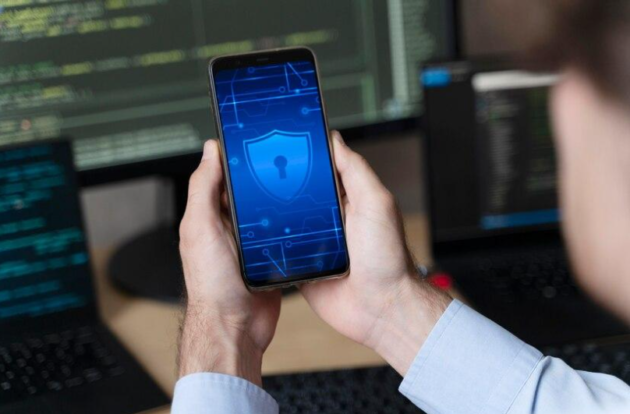
Your smartphone serves as an integral part of your daily life, storing crucial information such as emails, search history, and personal communications. The importance of protecting this data cannot be overstated, whether you’re wary of companies exploiting your information for profit, a curious roommate peeking at your messages, or the thought of a stranger accessing your personal details.
Privacy on your smartphone is a constant challenge. Your mobile service provider has access to your whereabouts at any given moment, and pinpointing the exact nature of the data harvested and sold by apps can be daunting. However, there are actionable measures everyone can implement to enhance their privacy.
Table of Contents
How to Improve iPhone Security and Privacy?
1. Enable Two-Factor Authentication
Single-factor authentication relies solely on using information you know, such as your login credentials. On the other hand, two-factor authentication (2FA) steps up security by also demanding something you physically possess, like your iPhone.
Implementing two-factor authentication on your Apple account significantly enhances its security by necessitating the entry of a verification code sent to your phone via text message every time you attempt to log in. Consequently, unless an individual has both your password and direct access to your mobile device, gaining entry to your Apple account becomes a formidable challenge.
To enable 2FA on your iPhone, simply navigate to Settings, tap on your name, select Password & Security, and then choose Two-factor authentication to follow the setup instructions.
2. Use a VPN
You can use VPN for iOS to protect your data, maintain privacy, and improve security. VPN apps can secure the iPhone from most hacker attacks without interfering with surfing. The main functions of the iOS VPN app: encryption and IP address spoofing. Advanced VPN providers such as VeePN may also offer no-log policies, kill switch functions, double VPN, and virus and phishing protection. Even the most advanced iPhone security features can’t enhance protection that much.
3. Audit App Permissions
When you download a new app, it often asks for permission to use your device’s features like the microphone, GPS, camera, and more. It’s easy to just keep clicking “yes” without thinking, but this can sometimes lead to oversharing with apps that don’t really need that information. For instance, there are apps that track your location even when they don’t need it for their functionality, just so they can sell this data, along with other details they gather about you, to advertisers.
To take control of your privacy, go to Settings > Privacy & Security on your device, and review each privacy setting carefully. Another way to do this is to head to Settings, scroll down to see a list of your apps, and review their permissions from there. Pay extra attention to Location Services since this is one of the most common permissions apps ask for that they might not need. Consider setting most of your apps to “Never” or “While Using” to limit their access to your location.
4. Disable Tracking
iOS naturally prevents applications from monitoring your activities across different businesses’ applications and sites by default. However, there is an option to allow such tracking, so it’s crucial to verify that tracking is indeed turned off to protect your privacy.
To accomplish this, simply navigate to Settings, then select Privacy & Security, followed by Tracking, and make sure that the “Allow Apps to Request to Track” option is switched off. They can still do it by IP address. To get around this, you can use VeePN and change your IP address. This way you can control how apps and websites see your location.
5. Enable Automatic Updates
Ensuring your apps and operating system are always up-to-date is crucial for maintaining security and privacy. By activating automatic updates, you can have these essential updates installed seamlessly in the background.
For your apps to update automatically, go to Settings, select App Store, and then turn on the App Updates option. Your operating system should already be configured to update itself automatically. However, it’s a good idea to verify this by navigating to Settings, choosing General, and then tapping on Software Update.
6. Remove Access When Locked
Your phone’s lock screen can potentially display a significant amount of private data, accessible to anyone who might get their hands on your device. To safeguard your privacy, it’s vital to limit the information visible on your lock screen.
For enhanced security, navigate to Settings, select Touch ID/Face ID & Passcode, proceed to the ‘Allow access when locked’ area, and turn off the access for any applications that could reveal personal details on your lock screen.
7. Turn Off iCloud Backup
Regarding data protection, iPhones are known for their robust security measures. They ensure message encryption from end to end and secure backups both during transfer and when stored on servers. However, it’s important to note that Apple maintains access to the decryption keys for data stored on iCloud, including backups. This situation allows law enforcement agencies the ability to request access to these backups.
If you prefer not to use iCloud backups to enhance your privacy, it is entirely possible to turn them off. Doing so implies that whenever you need to restore your phone or switch to a new one, you would have to start fresh unless you opt for backing up your data to your computer instead. For those who prioritize their privacy above all, the best course of action is to deactivate iCloud Backup, rely on local backups for your data, but keep Messages in iCloud activated for convenience and security.
Conclusion
Privacy is an ever-changing concern, and no safeguard you can apply is completely bulletproof, so be sure to check in on these various settings after iOS updates. The same goes for protection; the more measures you take, the stronger your cybersecurity will be. It’s impossible to lock everything down, but it’s possible to at least dial back the data collection.
